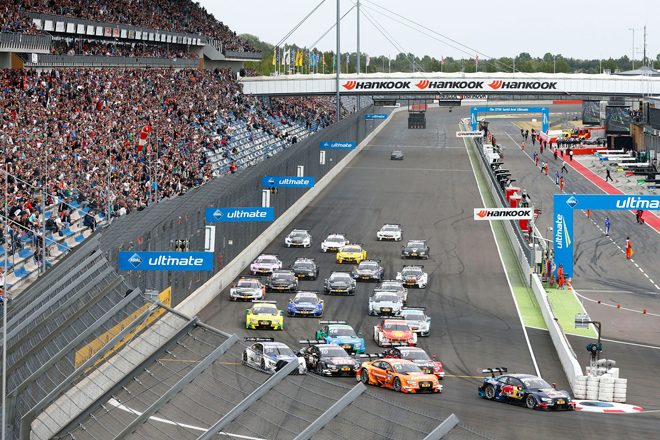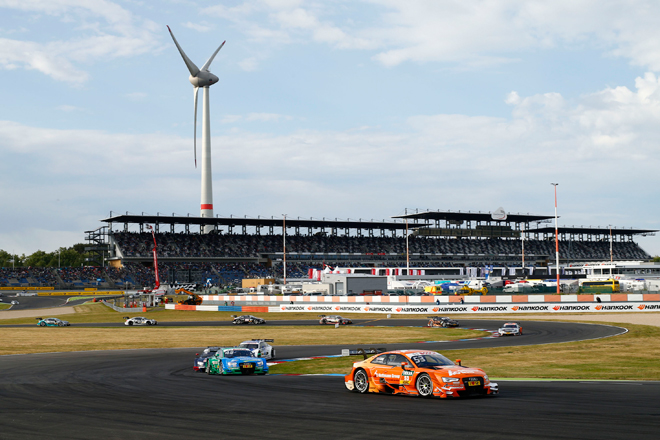After the Red Bull Ring in the Austrian Alps, this weekend the Lausitzring is the third stop of the 2016 DTM season. A motorsport highlight of never-before-seen proportions awaits the spectators on the 3.478-kilometre asphalt track. With the DTM, the ADAC GT Masters, the ADAC Formula 4, the Porsche Carrera Cup Germany and the Superbike*IDM, fans will have the complete racing package on one track. The track demands one thing in particular from the racing tyres of exclusive DTM partner Hankook: high grip potential.
Klettwitz/Germany, 2nd June 2016 – As in previous years, the DTM races will be held on the Grand Prix track and will start in an anticlockwise direction. With a total of twelve turns and only a few straights, the Lausitzring is one of the more technically demanding DTM tracks. Just 55 percent of the track is driven at full throttle; the average speed is 161 kilometres per hour. The racing tyres of exclusive DTM partner Hankook must provide plenty of traction on the slow sections of the track and in the angular infield so that the drivers can accelerate out of these passages quickly.
After the start comes a sharp left turn into the barely visible infield, where things can get very tight. Which is why the drivers often need to cut across the level kerbs to avoid collisions. “In contrast with the high, sharp-edged kerbs of the Hockenheimring, for example, the kerbstones here don’t represent a challenge for the Hankook racing tyres. They don’t put too much pressure on the construction of the Ventus Race,” explained Thomas Baltes, Hankook DTM race engineer.
The fast-paced changes of direction on the first section of the track are followed by slower passages, where, in the acceleration zones, the drivers receive optimum support from the high level of grip provided by the Hankook racing tyres. Then, on the start-finish straight, the drivers reach the top speed on the Lausitzring of more than 240 kilometres per hour, but must battle with their high-powered cars bouncing as a result of the uneven surface. Thomas Baltes: “These up and down movements at the front of the cars can be minimised by the right combination of air pressure and car set-up.”
The asphalt at the Lausitzring has fine pores and is very smooth. Which is why it is important for drivers and teams to quickly get the Ventus Race of premium tyre maker Hankook to work and in the optimum temperature range of between 90 and 100 degrees Celsius. “With the perfect combination of the right air pressure and vehicle set-up with regard to traction and aerodynamics, the Hankook racing tyre quickly develops its full grip potential,” said the Hankook DTM race engineer.


Date: 22/11/2017 Category: Uncategorized